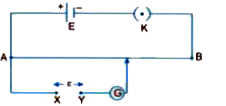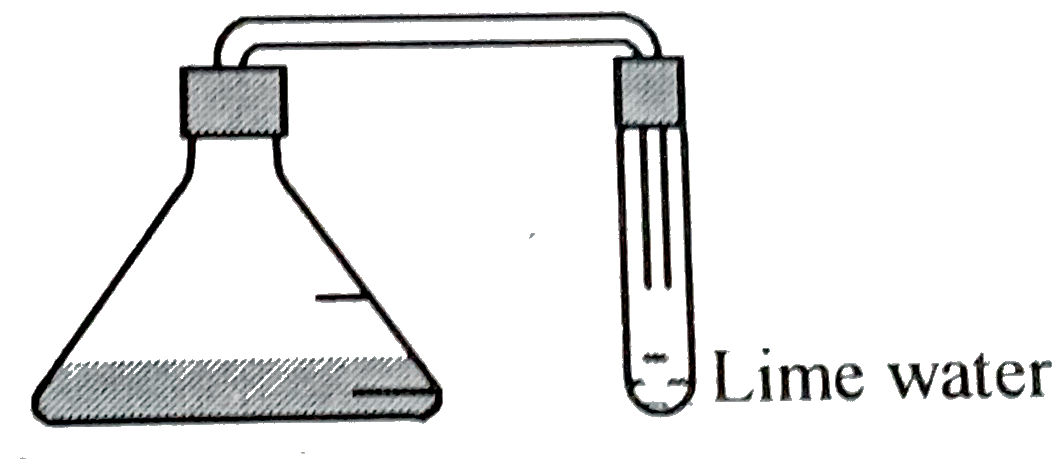A laboratory thermometer A is kept 7 cm away on the side of the flame while a similar thermometer B is kept 7 cm above the flame of a candle as shown in figure.

Which of the thermometers, A or B, will show a greater rise in temperature? Give reason for your answer.
Step by step video & image solution for A laboratory thermometer A is kept 7 cm away on the side of the flame while a similar thermometer B is kept 7 cm above the flame of a candle as shown in figure. Which of the thermometers, A or B, will show a greater rise in temperature? Give reason for your answer. by Physics experts to help you in doubts & scoring excellent marks in Class 7 exams.
Updated on:21/07/2023Topper's Solved these Questions
- HEATBOOK - NCERT EXEMPLARCHAPTER - HEATEXERCISE - SHORT ANSWER QUESTIONS
11 Videos
- HEATBOOK - NCERT EXEMPLARCHAPTER - HEATEXERCISE - SHORT ANSWER QUESTIONS
11 Videos
- ELECTRIC CURRENT AND ITS EFFECTS BOOK - NCERT EXEMPLARCHAPTER - ELECTRIC CURRENT AND ITS EFFECTS EXERCISE - LONG ANSWER QUESTIONS
7 Videos
- LIGHT BOOK - NCERT EXEMPLARCHAPTER - LIGHT EXERCISE - LONG ANSWER QUESTIONS
3 Videos
Similar Questions
Can we use a laboratory thermometer to measure human body temperature ? Give reason for your answer.
View SolutionThe bulb of thermometer A is coated with lampblack and the bulb of thermometer B is coated with silver. Both the thermometers are placed in sunshine for equal time
(a) Which thermometer will show a higher rise in temperature ?
(b) What conclusion is obtained from the above observation ?
View SolutionIs it possible to construct a triangle with lengths of its sides as 9 cm, 7 cm and 17 cm? Give reason for your answer.
View SolutionWhen a pencil cell is released from a certain point on an inclined wooden board, it travels a distance of 35 cm on floor board, it travels a distance of 20 cm on floor B before coming to rest. Which floor, A or B, offers greater friction ? Give reason for your answer.
View SolutionIs it possible to construct a triangle with lengths of its sides as 4 cm, 3 cm and 7 cm? Give reason for your answer.
View SolutionFour arrangements to measure temperatur of ice in beaker with laboratory thermometer are shows in figure (a, b, c and d). Which one of them shows the correct arrangement for accurate measurement of temperature ?
View SolutionIs it possible to construct a triangle with length of its sides as 8 cm ,7 cm and 4 cm ? Give reason for your answer
View Solution(a) An object is placed at a distance of 30 cm from a concave lens of focal length 15 cm. List four characteristics (nature, position, etc.) of the image formed by the lens.
(b) You are provided with two convex lenses of focal length 15 cm and 25 cm respectively. Which of the two is of larger power ? Give reason for your answer.
View SolutionFor the potentiometer circuit shown in the given figure, points X and Y represent the two terminals of an unknown emf ε . A student observed that when the jockey is moved from the end A to the end B of the potentiometer wire, the direction of the deflection in the galvanometer remains in the same direction. What may be the two possible faults in the circuit that could result in this observations ? If the galvanometer deflection at the end B is (i) more, (ii) less, than that at the end A which of the two faults," listed above, would be there in the circuit ? Give reasons in support of your answer in each case.

View SolutionThe break-down of glucose in a cell occurs in any of the following pathways :

Three experiments (A, B, C) have been set up. In each experiment, a flask contains the organism in growth medium, glucose and a brown dye that changes its colour to yellow when the pH decreases. The mouth of the flask is attached to a test tube containing lime water (Calcium hydroxide , as shown in the figure) . In C, but not in A and B , air is removed from the flask before beginning the experiment.
After a period of growth, the following observation were made :
A : Lime water turns milky , the dye colour remains the same
B : The dye colour changes , lime water does not turn milky
C : Lime water turns milky , the dye colour remains the same

(a) Question : Identify which of the reactions is the pathways depicted above is taking place in each experiment . Give reasons for your answer .
(b) Question : Identify which of the reactions in the pathways depicted above is expected to occur in Red Blood Cells (RBCs)
View Solution
